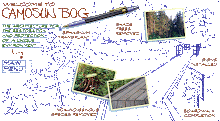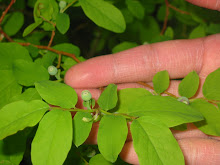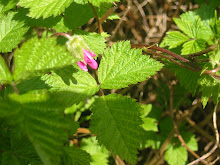by Zavier dela Cuesta
One Saturday while I was clipping salal with my grandmother, we found some bunchberry flowers that looked very different from other bunchberry flowers. A normal bunchberry has white bracts (little leaves) surrounding a tiny flower. In this plant there were some leaves that were bigger or smaller or tiny, some green with white tips, others white with green tips and a few with a streak of white down the middle of a green leaf. Somehow, in this plant the flower-like bracts had sunk into the leaves, like some trilliums.
Was this a ‘sport’ (happens once) or a ‘mutation’ (comes back again the same next year)? Why did it happen? Why here? What caused it – time of flowering (late) or lack of water? Is this environmental or evolutionary? If these leaves appear next year it may mean there is a mutation in the DNA. More research is needed into this rarity.
Zavier (Zavi) is interested in how nature is built and how it evolved. He was once the youngest ‘crazy bogger’ at Camosun Bog. Now he measures the water table
 |
| Bunchberry (Cornus canadensis) is a rhizomic perennial plant that is 5-25 cm high with white bracts surrounding a tiny flower |
 |
Bunchberry found by Zavier in Camosun Bog. |
photos by Gerry Mignault
Zavier (Zavi) is interested in how nature is built and how it evolved. He was once the youngest ‘crazy bogger’ at Camosun Bog. Now he measures the water table
 |
| Zavi interpreting the bog for visitors. His Grandma, Pat Wilson, looks on with pride. |
______
This article originally appeared in NatureWild, the newsletter of the Young Naturalists Club






